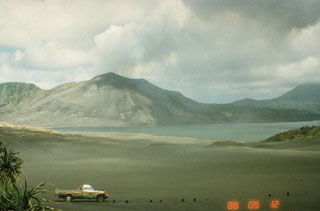Report on Yasur (Vanuatu) — 2 February-8 February 2022
Smithsonian Institution / US Geological Survey
Weekly Volcanic Activity Report, 2 February-8 February 2022
Managing Editor: Sally Sennert.
Please cite this report as:
Global Volcanism Program, 2022. Report on Yasur (Vanuatu) (Sennert, S, ed.). Weekly Volcanic Activity Report, 2 February-8 February 2022. Smithsonian Institution and US Geological Survey.
Yasur
Vanuatu
19.532°S, 169.447°E; summit elev. 361 m
All times are local (unless otherwise noted)
On 2 February the Vanuatu Meteorology and Geo-Hazards Department (VMGD) reported that sulfur dioxide gas emissions from Yasur’s active lava lake were detected drifting NW in satellite images. The Alert Level remained at 2 (on a scale of 0-4) and the public was reminded not to enter the restricted area within 600 m around the cone, defined by Danger Zone A on the hazard map.
Geological Summary. Yasur has exhibited essentially continuous Strombolian and Vulcanian activity at least since Captain Cook observed ash eruptions in 1774. This style of activity may have continued for the past 800 years. Located at the SE tip of Tanna Island in Vanuatu, this pyroclastic cone has a nearly circular, 400-m-wide summit crater. The active cone is largely contained within the small Yenkahe caldera, and is the youngest of a group of Holocene volcanic centers constructed over the down-dropped NE flank of the Pleistocene Tukosmeru volcano. The Yenkahe horst is located within the Siwi ring fracture, a 4-km-wide open feature associated with eruption of the andesitic Siwi pyroclastic sequence. Active tectonism along the Yenkahe horst accompanying eruptions has raised Port Resolution harbor more than 20 m during the past century.
Source: Vanuatu Meteorology and Geohazards Department (VMGD)

